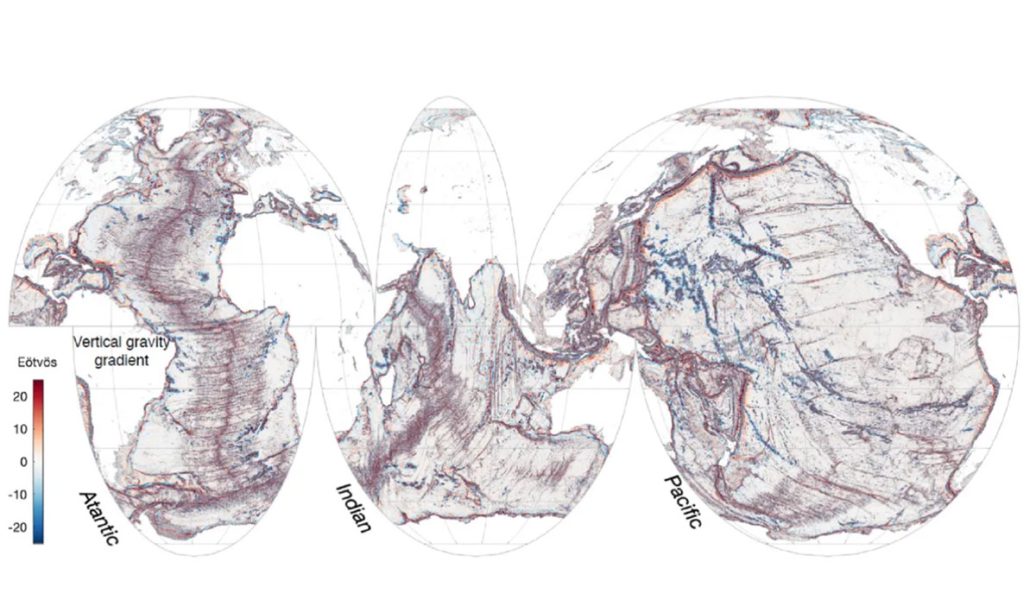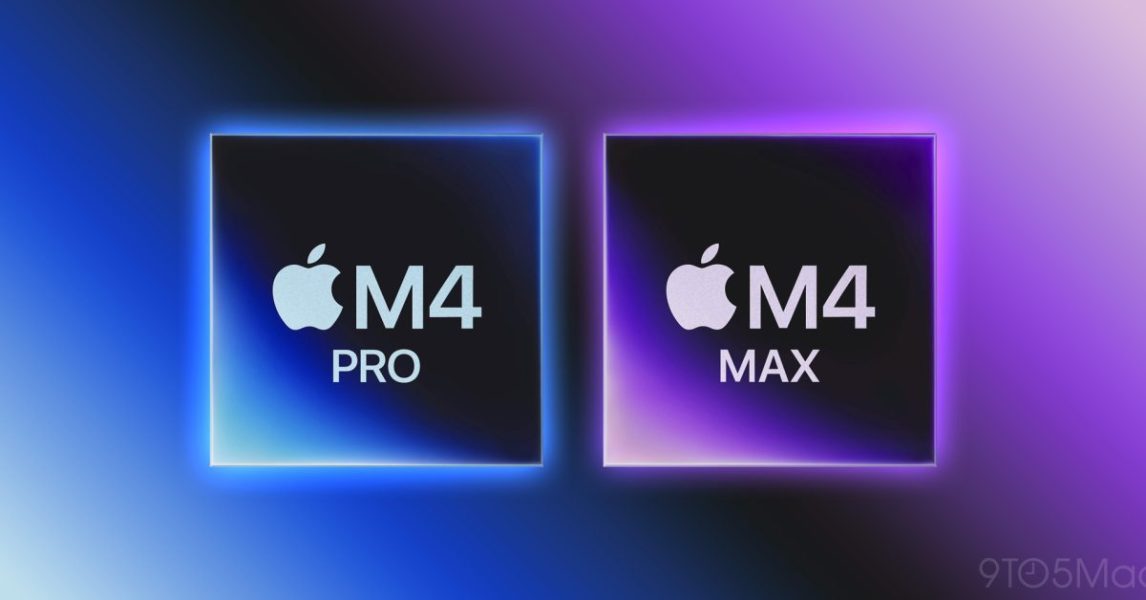New Silurian aculiferan fossils reveal complex early history of Mollusca – Nature.com

Thank you for visiting nature.com. You are using a browser version with limited support for CSS. To obtain
the best experience, we recommend you use a more up to date browser (or turn off compatibility mode in
Internet Explorer). In the meantime, to ensure continued support, we are displaying the site without styles
and JavaScript.Advertisement
Nature
(2025)Cite this article
162 AltmetricMetrics detailsMollusca is the second most species-rich animal phylum, but the pathways of early molluscan evolution have long been controversial1,2,3,4,5. Modern faunas retain only a fraction of the past forms in this hyperdiverse and long-lived group. Recent analyses6,7,8 have consistently recovered a fundamental split into two sister clades, Conchifera (including gastropods, bivalves and cephalopods) and Aculifera9, comprising Polyplacophora (‘chitons’) and Aplacophora. Molluscan evolution in toto is characterized by plasticity in body-plan characters10, but historically aculiferans have been interpreted as more conservative10,11. The few completely preserved aculiferan or aculiferan-like fossils from the early Palaeozoic12,13,14,15,16,17,18,19 have been largely regarded as transitional forms that inform questions of character polarity between the extant polyplacophoran and aplacophoran body forms20,21. The history of early aculiferans, and the morphological and ecological range that they occupied, remain inadequately sampled. Here we describe two new three-dimensionally preserved aculiferan species from the Silurian Herefordshire Lagerstätte22,23, which substantially extend the morphological and ecological range of the clade. Phylogenetic analyses indicate positions within a complex nexus of taxa and suggest reversals in the states of fundamental characters such as the presence of valves and the nature of the foot. In contrast to previous hypotheses of morphological conservatism, evolution in early aculiferans generated a profusion of unusual forms comparable to the diversification of other crown-group molluscs.Aculiferans typically possess a scleritome of cuticular aragonitic spicules9. Polyplacophorans are characterized by a series of eight dorsal valves and a ventral foot surrounded by gills. Aplacophorans, comprising the classes Solenogastres and Caudofoveata, have a vermiform shell-less body with a posterior respiratory cavity10 and a reduced or absent foot. Living aculiferans were interpreted historically not as a clade but as basal branching groups within Mollusca, because of their relatively simple morphology11; chitons, for example, have been labelled ‘living fossils’24 because they lack cephalized senses and have conservatism in form throughout the fossil record.Early Palaeozoic fossils include many ‘chiton-like’ valves25,26,27,28,29,30,31,32,33,34 as well as sclerite- or spicule-bearing forms that have been variously placed within (or compared with) Aculifera12,13,14,15,16,17,18,19. Completely preserved examples are rare, but important in documenting body-plan configurations and character-state combinations outside the scope of the crown-group lineages. The Silurian genus Acaenoplax, for example, the most aplacophoran-like early fossil described to date, bears a series of shell valves as well as spicules14,19. All complete fossils assigned to the polyplacophoran subclass Paleoloricata have chiton-like valves associated with a vermiform body that lacks a foot but possesses a posterior respiratory cavity15,18. The morphological, ecological and temporal range occupied by total-group Aculifera is poorly constrained, yet remains crucial to understanding molluscan body-plan evolution.We describe two new vermiform aculiferan molluscs, Punk ferox and Emo vorticaudum, from the Silurian Herefordshire Lagerstätte (approximately 430 million years before present), a deposit that preserves a diverse open marine biota in remarkable detail22,23. The specimens were reconstructed three-dimensionally through a combination of physical–optical tomography and phase-contrast synchrotron X-ray microtomography (SXMT). The new genera substantially expand the morphological range of Palaeozoic aculiferans, providing evidence for previously unknown character combinations and locomotion mechanisms.Phylum MolluscaPunk ferox Sutton, Sigwart, Briggs, Gueriau, King, Siveter and Siveter gen. et sp. nov.LSID. Punk: urn:lsid:zoobank.org:act:06C4B4EE-8FA2-43B6-9BB0-67DE8816C3A4. Punk ferox: urn:lsid:zoobank.org:act:2F594C68-75BB-4E62-B93E-A08BB5753FFC.Etymology. Punk: fancied resemblance of the spicule array to the spiked hairstyles associated with the punk rock movement; ferox (Latin): wild, bold, defiant. Grammatical gender: nonbinary.Holotype. Oxford University Museum of Natural History, OUMNH PAL-C.29644, the only known specimen (Fig. 1).a–c,i–n,q–u, Virtual reconstructions from physical–optical dataset. d–h, Cross-sections. o,p, Optical tomograms. a, Dorsal stereo-pair. b, Left lateral stereo-pair. c, Left lateral (without spines and ?extraneous material) showing positions of regions 1–3 (white dotted lines) and cross-sections d–h (red lines). d–h, Cross-sections traced from virtual reconstruction with the extent of lateral surfaces and median ridges indicated. All scales are as shown in d. i, Dorsal stereo-pair (without spines). j, Ventral stereo-pair. k, Ventral stereo-pair (without spines and ?extraneous material) indicating regions 1–3. l, Right lateral of anterior (without spines and ?extraneous material, with body translucent) showing positions of regions 1–3 (white dotted lines) and tomograms o and p (red lines). m, Ventral of anterior (as l, scale as l). n, Left lateral of anterior (as l, scale as l). o,p, Optical tomogram Punk_B_PO_212.bmp41 (o) and Punk_B_PO_152.bmp41 (p). q, Anterior oblique stereo-pair. r, Posterior oblique stereo-pair (without spines and ?extraneous material). s, Anterior oblique (as r). t, Ventral detail of anterior (without spines and ?extraneous material). u, Left lateral oblique. ap?, putative anterior plate on buccal mass; bm, buccal mass; ca, concavity on left side; cs, concretion split; dh, dorsal ‘hump’; dls, dorsolateral surface; dmr, dorsal median ridge; dvm, dorsoventral margin; em, ?extraneous material; g, gills; g1, first (anterior-most) gill; hs, head spines; p, internal plate; r1–3, regions 1–3; sf, sediment fill; sp, spines; uc, undercut beneath buccal mass; up, younging direction indicated by sediment fill; vls, ventrolateral surface; vmr, ventral median ridge. Scale bars, 1 mm.Stratigraphy and locality. Wenlock Series, Silurian; Herefordshire, England.Diagnosis for genus and species. Vermiform, with dorsal and ventral median ridges. Lacking valves. Scleritome of mostly dorsally directed elongate spicules arising dorsolaterally and posteriorly. Ventral tissues non-cuticular. Approximately 25 gill pairs flanking ventral median ridge in posterior half of trunk.Description (expanded in Supplementary Note 1). Trunk elongate and vermiform, rounded at anterior and posterior terminations (Fig. 1a–c,i–k,q–s,u). Dorsal surface with median ridge (Fig. 1i,r,s,u), broader anteriorly than posteriorly, with low ‘hump’ near midpoint (dh; Fig. 1a,i,s). Ridge flanks (concave-up in cross-section) transition laterally into dorsolateral surfaces (typically convex-up in cross-section; Fig. 1d–h); these meet at the posterior extremity of the trunk (Fig. 1r).Valves absent. Dorsolateral surfaces bear long spines, interpreted as mineralized spicules (Fig. 1a,b,o–q,u). Spine length varies little along trunk except near terminations (Fig. 1b). Spines directed dorsally and weakly recurved towards the midline. Spine array open dorsally, except in trunk posterior (Fig. 1a). Spine array fans out anteriorly and laterally towards the trunk anterior (Fig. 1a,j,k,u). Anterior margin bears several short ‘head’ spines (Fig. 1a,j,q,u).Dorsal surface better preserved than ventral. Surfaces separated by a sharp margin (dvm; Fig. 1c,o,p,u) differentiating dorsal integument (interpreted as cuticular) from ventral (non-cuticular). Ventral interpretation complicated by the necessarily interpretative boundary between fossil and adherent ‘extraneous material’ (rendered translucent; Fig. 1b,j,u). Ventral morphology described in three regions (r1–3; Fig. 1c,k). Region 1 is a short ‘head’ with subcylindrical ‘boss’ interpreted as buccal mass (Fig. 1c,d,j,k,q,s–u), lacking preserved opening, possibly bearing sub-semicircular anterior plate (Fig. 1t). Ventrolateral surfaces surround buccal mass and continue into region 2 (Fig. 1q,t). Regions 2 and 3 with strong median ridge between subhorizontal lateral regions (Fig. 1b,e–h,k,o–r,t,u), abutting buccal mass anteriorly, varying in cross-sectional profile along trunk. Region 2 extends to near midpoint (Fig. 1c). Asymmetrical ‘inflation’ of median ridge (Fig. 1j,k) may be a post-mortem effect. Posterior boundary of region 2 corresponds to change in width of dorsal median ridge (broader above region 2; Fig. 1c,i,k). Region 3 bears around 25 pairs of short subconical projections adjacent to median ridge, interpreted as gills (Fig. 1b,c,h,j,k,r,u).Thin plate and geopetal cavity-fill preserved inside ventral median ridge of region 3 (Fig. 1f,l–n,o,p). Plate compositionally differentiated, probably mineralized and preserved displaced from unknown original position.Emo vorticaudum Sutton, Sigwart, Briggs, Gueriau, King, Siveter and Siveter gen. et sp. nov.LSID. Emo: urn:lsid:zoobank.org:act:6C11D55C-7C33-4AE4-A848-90A335C39AFF. Emo vorticaudum: urn:lsid:zoobank.org:act:8386FD34-6905-42D0-BCF6-DE196510E1EB.Etymology. Emo: after the emo musical genre related to punk rock, whose exponents canonically bear long ‘bangs’ or fringes, of which the scleritome is reminiscent, as well as studded clothing recalling the anterior valves; vorticaudum (Latin): adjective combining vortex (whirl) and cauda (tail). The name alludes to the rotational twisting of the tail–spine arrangement. Grammatical gender: nonbinary.Holotype. Oxford University Museum of Natural History, OUMNH PAL-C.36023, the only known specimen (Fig. 2 and Extended Data Fig. 1).a–c, j,k,m–t, Virtual reconstructions from synchrotron dataset. d–h, Cross-sections. l, Optical tomogram. a, Dorsal stereo-pair. b, Left lateral stereo-pair. c, Left lateral (without spines) showing positions of body divisions (white dotted lines) and cross-sections d–i (red lines). d–i, Cross-sections traced from virtual reconstruction. All scales are as shown in d (except i). j, Ventral stereo-pair. k, Dorsal stereo-pair (without spines). l, Optical tomogram Emo_A_PO_031.bmp41, oblique but sublongitudinal, positioned near part-counterpart boundary. m, Anteroventral oblique. n, Left lateral (missing anterior, without spines, with body translucent). o, Ventral (as n). p, Posterodorsal oblique stereo-pair. q, Region 4 (without spines, viewing position as left-hand p). r, Subanterior, dorsal downwards, looking directly down onto valve I (image manually enhanced to pick out valves in green, for clarity). s, Subdorsal, looking directly down onto valve II (as r). t, Lateral of anterior region (as r). br, basal ridge; cb, cuticular break (artefactual); i1–4, internal structures 1–4; gl, growth-line of valve II; gr, groove between regions 1 and 2; lp, light coloured patch in matrix; lr, lateral roll; ls, posterior lateral paired spines; mo, ?mouth; rp, respiratory protuberances/projections; ps, posterior spines; sp, main spine array; ss, ventral submedial spine; v1, valve I; v2, valve II; vr, ventral ridges; vs, postero-ventrally directed spine. Scale bars, 1 mm.Stratigraphy and locality. Wenlock Series, Silurian; Herefordshire, England.Diagnosis for genus and species. Vermiform, trunk lacking foot, with rounded convex dorsal and ventral surfaces. Two similar small suboval roof-like valves at anterior. Dorsal and lateral scleritome of spicular spines, absent on the head and ventrally. Articulated posterior region forming respiratory cavity surrounded by posteriorly directed spines.Description (expanded in Supplementary Note 1). Vermiform (Fig. 2c,j,k), weakly dorsoventrally compressed (Fig. 2e–i), preserved with dorsoventral fold near midpoint (Fig. 2b,c). The body comprises four regions (r1–4 anterior to posterior; Fig. 2c,j,k).Region 1 is a short ‘head’ bearing two similar small valves, Valve I anterior-facing, valve II dorsal-facing (Fig. 2a,k,r–t). Valves in near contact, at a high angle (Fig. 2t). Both valves suboval with distinct and weakly concave lateral areas flanking a median ridge, lacking ornament, but with one growth-line (Fig. 2t). Raised ventromedian region bearing weak elongate median hollow interpreted as the mouth (Fig. 2j,m). Region 1 separated from ventral surface of region 2 by transverse groove (Fig. 2b,t).Region 2 is a ‘neck’ with near-parallel lateral margins (Fig. 2j,k), expanding dorsoventrally, with pronounced elongate dorsal ‘hump’ (Fig. 2c,f,m,t). Lateral, dorsal and ventral surfaces continuous (Fig. 2e,f,m). Region 3, comprising most of body-length, characterized by lateral rolls, thickenings of lateral margin separating dorsal and ventral surfaces (Fig. 2g,h,j,k,m). Lateral rolls merge anteriorly into lateral surfaces of region 2; posteriorly they meet medially on ventral surface (Fig. 2j,m). Dorsal and ventral surfaces weakly convex (Fig. 2g,h); minor transverse ridges (Fig. 2b) interpreted as in vivo deformation resulting from fold. Dorsal and ventral surfaces of region 3 lacking either preservational differentiation or sharp junction, anteriorly ventral surface continuous with that of region 2, in turn continuous with region 2 lateral and dorsal surfaces. All integument of regions 1–3 thus interpreted as cuticular; foot absent.Regions 2 and 3 bearing array of dorsal and lateral spines interpreted as mineralized spicules (Fig. 2a,b,j,l,m,p), arising from lateral rolls (the longest spines) and the dorsal surface. Spines absent ventrally and anteriorly. Gap in posterior dorsal scleritome (Fig. 2a,p) interpreted as preservational artefact (Supplementary Note 1). Dorsally directed spines recurved medially; mid-dorsal spines ‘criss-cross’ medially (Fig. 2a,p). Four posterior spines are different in direction to nearby spines (ls, vs, ss; Fig. 2b,j,m,p; Supplementary Note 1).Region 4 is a ‘tail’, subcircular in cross-section (Fig. 2i), tapering posteriorly from transverse basal ridge (Fig. 2c,j,k,q). The posterior surface bears poorly preserved stubby protuberances, interpreted as respiratory surfaces (Fig. 2q). Region 4 encased in posteriorly directed and rotationally twisted spine array (Fig. 2a,b,j,p) originating near basal ridge, terminating the same distance beyond respiratory projections (Fig. 2p).Four internal structures (i1–4; Fig. 2g,n,o) are preserved. These are difficult to interpret and may, in part, be artefacts of preservation. Those in region 4 (i3, i4) may represent traces of gut and respiratory structures respectively.Punk and Emo are both differentiated dorsoventrally, with spine-free ventral surfaces, implying a vagile epibenthic mode of life. In both cases, however, their locomotory mode must have been unusual. Punk possesses the homologue of a foot, but, unlike that in extant molluscs, it forms a ridge-like projection rather than a flat sole. It may have had a locomotory role, but the nature of its interaction with the substrate is unclear. Emo possesses a flatter ventral sole, but this was cuticular, so cannot have functioned as a typical molluscan foot. The preservation of the holotype with a dorsoventral median fold may indicate an ‘inching’ locomotive mode, using the relatively robust postero-lateral and postero-ventral spines, separate from the main spicule array, as a ratchet to resist retrograde movement. This locomotion mode would be novel. Inching is currently used by terrestrial caterpillars35 and freshwater leeches36, both of which facilitate it using anterior adhesion/grip rather than by resistance to posterior motion.Both Punk and Emo record new combinations of features including characters long considered to be of paramount importance in molluscan classification and phylogeny. Punk resembles aplacophorans in its vermiform body, lack of valves and scleritome of long spines. However, it resembles polyplacophorans in possessing a broad median foot (or foot homologue) with a peripheral respiratory cavity housing serially repeated gills. Restriction of the ventral respiratory cavity to the posterior half of the body is also a feature of the extant plesiomorphic polyplacophoran order Lepidopleurida37. Emo is similar to caudofoveate aplacophorans10 with a broadly vermiform body, an anterior region (region 1) comparable to the caudofoveate anterium, a posterior region (region 4) closely comparable to the posterium of extant caudofoveates10, and a dense and complete scleritome of dorsal spines. In addition it lacks a foot and its respiratory structures are posterior not ventral. However, it resembles polyplacophorans in bearing dorsal valves (in the head region), and in being dorsoventrally compressed. Both new genera differ from other Palaeozoic fossils, except for some similarities between Emo and the heloplacid Acaenoplax14,19,23. These include a similar valve morphology and respiratory structures, and the presence of a spine-free cuticular ventral sole. There are, however, significant differences, notably the number of valves and the lack of externally expressed serial repetition in Emo.To elucidate phylogenetic relationships and character-state transitions, we constructed a new morphological character matrix, based on previously published analyses38,39 but limiting the matrix to characters relevant to molluscs. Our Bayesian analysis (Fig. 3) recovered a monophyletic Mollusca and Aculifera. Both Punk and Emo resolved within a broad clade comprising Paleoloricata and Aplacophora, with Punk in the same clade as modern Aplacophora, and Emo as sister to the heloplacids. The result of the parsimony analysis of the same dataset (Extended Data Fig. 2) was broadly compatible but less resolved, and is not considered further.Majority rule consensus tree of the posterior sample of a Bayesian analysis of fossil and living molluscs based on a morphological matrix of 108 characters. Grey branches are extant; black branches are extinct. Figured taxa are given in bold. Values at nodes are posterior probabilities. Reconstructed foot-character state is given for selected nodes/tips (see Extended Data Fig. 3 for full reconstruction). Branch lengths represent expected number of substitutions per site (indicated by scale bar). a, posterium.In Fig. 3, Wiwaxia13, Odontogriphus40 and Shishania39 resolve as sister taxa within a basal molluscan polytomy in agreement with other analyses39; other fossils previously considered as possible aculiferans resolve within the aculiferan clade, with Halkieria12, Orthrozanclus16 and Calvapilosa17 in the stem group. The multiplacophorans27,33 (+Echinochiton28) resolve as a clade sister to crown-group Aculifera, in contrast with previous analyses that placed Multiplacophora as part of total-group Polyplacophora39 or stem group Neoloricata1,15,33. Extant chitons (plus two neoloricate fossils) form a clade, but the neoloricate chitons Glaphurochiton29, Acutichiton30 and Gryphochiton31 appear as a grade at the base of aculiferan crown group; this may be an artefact reflecting the balance of characters in the analysis and the fragmentary nature of most chiton fossils. All paleoloricate ‘chitons’ in our analysis fall in the aplacophoran stem group. A large clade resolved in this stem contains the clade (Emo + Heloplacidae25) in addition to three paleoloricate taxa known only from valves (Septemchiton32, Robustum33 and Matthevia34).Ancestral character-state reconstruction (Fig. 3 and Extended Data Fig. 3) recovers convergence in characters that are traditionally considered diagnostic of major groups. Convergent characters include valve count, which is not congruent on any branching-order reconstruction of our tree, and was probably reduced independently in lineages leading to Punk + Aplacophora, and to Emo (Extended Data Fig. 3). The aplacophoran total-group (including Paleoloricata) is characterized by the absence of a typical foot, but in detail the picture is more complex, with probably convergent acquisition of a pedal groove in solenogastres and Kulindroplax, and foot loss occurring in multiple places (Fig. 3 and Extended Data Fig. 3). The aberrant ridge-like foot of Punk further complicates the history of this character. Tree-topology also implies that the caudofoveate-like posterium of Emo was convergently acquired. These convergences and previously undescribed character combinations emphasize the complexity and plasticity of the early Palaeozoic aculiferan fauna, which follows the pattern of extreme disparity and convergences across Mollusca. Extant aplacophorans and chitons represent an anatomically and functionally depauperate sample of a diverse Palaeozoic group with a complex evolutionary history.Both specimens were subjected to physical–optical tomography using the method detailed in ref. 42. Both specimens were serially ground at 20 μm intervals and photographed using a Leica digital microscope camera at a pixel resolution of 14.1 μm, in both cases as two separate datasets representing the two parts of the split concretion. Images were registered using SPIERSalign43. Raw physical–optical tomograms are provided for both specimens in the accompanying data41.Before physical–optical tomography, both specimens were scanned using phase-contrast SXMT with the PSICHÉ beamline of the SOLEIL synchrotron (Saint-Aubin, France) using a pink beam (63–69 keV), produced by filtering the synchrotron beam using 0.3 mm of tungsten and 1 mm of aluminium. The sample-to-detector propagation distance was 200 mm, and 3,000 projections were used. The exposure time was 30 ms per radiograph for a storage ring current of 16 mA in single bunch mode. The limited field of view available (12 mm × 3.6 mm) was extended horizontally by positioning the rotation axis off-centre, and extended vertically by recording a series of acquisitions with vertical movement of the sample. The volume (6.5 µm voxel size, no binning applied) was reconstructed from the combined radiographs using PyHST2 software44, with a Paganin phase retrieval algorithm45. The 32-bit greyscale float data of the reconstruction was converted to 8-bit for analysis, using the window of 0.1–0.6 for OUMNH PAL-C.29644 (Punk) and 0.1–0.7 for OUMNH PAL-C.36023 (Emo). Raw SXMT tomograms are provided for both specimens in the accompanying data41.Phase-contrast SXMT does not typically perform well on specimens from the Herefordshire deposit, but for certain specimens it is effective46. In this study, the phase-contrast SXMT dataset proved superior to physical–optical tomography for OUMNH PAL-C.36023 (Emo) and was used to create the reconstructions in Fig. 2. For OUMNH PAL-C.29644 (Punk) the phase-contrast SXMT dataset lacked contrast and the reconstructions (Fig. 1) are based on the physical–optical dataset. Manual and semi-automatic segmentation was undertaken before reconstruction using the SPIERS suite43 to resolve fossil/matrix ambiguities and to classify portions of fossil (for example, separating spines from trunk). Spine segmentation utilized the SPIERSedit local contrast enhancement feature. The internal plate in Punk ferox was visualized using spline overlays (SPIERSedit ‘curves’ system), rather than by direct segmentation. Reconstructed models were generated and studied using SPIERview43, and publication images and stereo pairs (Figs. 1 and 2) were rendered using the cycles engine of Blender v.4.0 (ref. 47). Reconstructed models for both specimens are supplied41 in VAXML/STL format48.The 51 taxa selected for this analysis include the species used in refs. 1,15 and a selection of more fossils and alternative living species used in refs. 38 and 39, plus the two new species described here (Supplementary Table 1). A character matrix was assembled based on previously published analyses for other Palaeozoic fossil lophotrochozoans, using the subset of characters relevant to molluscs taken from the most comprehensive previous analyses38,39, which in turn incorporated revised character sets based on earlier studies of fossil chitons1,15. We revised the character descriptions and added new characters in the light of previously undescribed morphologies observed in the new material, which resulted in a set of 108 characters (Supplementary Table 2). The coded matrix is provided in Supplementary Data 1 and 2 in MS Excel and NEXUS49 formats respectively.Bayesian analyses were conducted using MrBayes50,51 v.3.2.7 via the CIPRES Science Gateway52 with two parallel runs on four chains in a temperature of 0.1, running indefinitely (100 million generations) but stopping automatically when the analysis reached posterior probability values below 0.01. The first 25% of results were discarded as burn-in. Commands are included in Supplementary Data 2; further analyses were run to test the influence of ordered multistate characters (command: ctype ordered/unordered) but this did not alter the resulting topology. Ordering commands are hence not included in the Supplementary Data. Further phylogenetic analyses using parsimony were conducted in TNT53,54, Willi Hennig Society edition, v.1.6. A traditional search was used with 5,000 random addition sequences, and Max Trees set to 9,999. Relevant multistate characters were set to ‘additive’ (=ordered) (Supplementary Data 2). Implied weights were not enabled. Results are shown in Extended Data Fig. 2. Finally, we reconstructed ancestral state conditions using parsimony based on the primary phylogenetic result (Fig. 3) using MESQUITE55.Further information on research design is available in the Nature Portfolio Reporting Summary linked to this article.All data required for assessing the conclusions are available online. The phylogenetic matrix is provided in Supplementary Data 1 and 2. Tomographic datasets and 3D models are available via the FigShare repository at https://doi.org/10.6084/m9.figshare.26340880 (ref. 41).Sigwart, J. D. & Sutton, M. D. Deep molluscan phylogeny: synthesis of palaeontological and neontological data. Proc. R. Soc. B 274, 2413–2419 (2007).Article
PubMed
PubMed Central
MATH
Google Scholar
Kocot, K. M. et al. Phylogenomics reveals deep molluscan relationships. Nature 477, 452–456 (2011).Article
ADS
CAS
PubMed
PubMed Central
Google Scholar
Schrödl, M. & Stöger, J. A review on deep molluscan phylogeny: old markers, integrative approaches, persistent problems. J. Nat. Hist. 48, 2773–2804 (2014).Article
MATH
Google Scholar
Sigwart, J. D. & Lindberg, D. R. Consensus and confusion in molluscan trees: evaluating morphological and molecular phylogenies. Syst. Biol. 64, 384–395 (2015).Article
CAS
PubMed
MATH
Google Scholar
Wanninger, A. & Wollesen, T. The evolution of molluscs. Biol. Rev. 94, 102–115 (2018).Article
PubMed
Google Scholar
Smith, S. A. et al. Resolving the evolutionary relationships of molluscs with phylogenomic tools. Nature 480, 364–367 (2011).Article
ADS
CAS
PubMed
MATH
Google Scholar
Kocot, K. M., Poustka, A. J., Stöger, I., Halanych, K. M. & Schrödl, M. New data from Monoplacophora and a carefully-curated dataset resolve molluscan relationships. Sci Rep. 10, 101 (2020).Article
ADS
CAS
PubMed
PubMed Central
Google Scholar
Han, X. et al. Out of the ocean: the timescale of molluscan evolution based on phylogenomics revealed the ages of mollusks’ evolutionary transitions into the novel environment. Front. Ecol. Evol. 12, 1327007 (2024).Article
Google Scholar
Sigwart, J. D., Todt, C. & Scheltema, A. H. Who are the ‘Aculifera’? J. Nat. Hist. 48, 2733–2737 (2014).Article
MATH
Google Scholar
Ponder, W. F., Lindberg, D. R. & Ponder, J. M. Biology and Evolution of the Mollusca Vol. 2 (CRC, 2020).Kocot, K. M. Recent advances and unanswered questions in deep molluscan phylogenetics. Am. Malacol. Bull. 31, 195–208 (2013).Article
Google Scholar
Conway Morris, S. & Peel, J. S. Articulated halkieriids from the Lower Cambrian of north Greenland. Nature 345, 802–805 (1990).Article
ADS
MATH
Google Scholar
Smith, M. R. Ontogeny, morphology and taxonomy of the soft-bodied Cambrian ‘mollusc’ Wiwaxia. Palaeontology 57, 215–229 (2014).Article
MATH
Google Scholar
Sutton, M. D., Briggs, D. E. G., Siveter, D. J. & Siveter, D. J. An exceptionally preserved vermiform mollusc from the Silurian of England. Nature 410, 461–463 (2001).Article
ADS
CAS
PubMed
Google Scholar
Sutton, M. D., Briggs, D. E. G., Siveter, D. J., Siveter, D. J. & Sigwart, J. D. A Silurian armoured aplacophoran and implications for molluscan phylogeny. Nature 490, 94–97 (2012).Article
ADS
CAS
PubMed
Google Scholar
Conway Morris, S. & Caron, J.-B. Halwaxiids and the early evolution of the lophotrochozoans. Science 315, 1255–1258 (2007).Article
ADS
MATH
Google Scholar
Vinther, J., Parry, L., Briggs, D. E. G. & Van Roy, P. Ancestral morphology of crown-group molluscs revealed by a new Ordovician stem aculiferan. Nature 542, 471–474 (2017).Article
ADS
CAS
PubMed
Google Scholar
Sutton, M. D. & Sigwart, J. D. A chiton without a foot. Palaeontology 55, 401–411 (2012).Article
Google Scholar
Sutton, M. D., Briggs, D. E. G., Siveter, D. J. & Siveter, D. J. Computer reconstruction and analysis of the vermiform mollusc Acaenoplax hayae from the Herefordshire Lagerstätte (Silurian, England), and implications for molluscan phylogeny. Palaeontology 47, 293–318 (2004).Article
Google Scholar
Scherholz, M., Redl, E., Wollesen, T., Todt, C. & Wanninger, A. Aplacophoran mollusks evolved from ancestors with polyplacophoran-like features. Curr. Biol. 23, 2130–2134 (2013).Article
CAS
PubMed
PubMed Central
Google Scholar
Sigwart, J. D. Molluscs all beneath the sun, one shell, two shells, more, or none. Curr. Biol. 27, R708–R710 (2017).Article
CAS
PubMed
Google Scholar
Briggs, D. E. G., Siveter, D. J. & Siveter, D. J. Soft-bodied fossils from a Silurian volcaniclastic deposit. Nature 382, 248–250 (1996).Article
ADS
CAS
Google Scholar
Siveter, D. J., Briggs, D. E. G., Siveter, D. J. & Sutton, M. D. The Herefordshire Lagerstätte: fleshing out Silurian marine life. J. Geol. Soc. 177, 1–13 (2020).Article
ADS
Google Scholar
Sigwart, J. D. Primitive living chitons: morphological cladistic analysis as a model for character evaluation. Am. Malacol. Bull. 27, 95–104 (2009).Article
Google Scholar
Cherns, L. Early Palaeozoic diversification of chitons (Polyplacophora, Mollusca) based on new data from the Silurian of Gotland, Sweden. Lethaia 37, 445–456 (2004).Article
Google Scholar
Peel, J. S. The oldest paleoloricate mollusc (Cambrian Series 2, Stage 4; North Greenland) and its bearing on aculiferan evolution. Bull. Geosci. 95, 127–144 (2020).Article
MATH
Google Scholar
Vinther, J. et al. The origin of multiplacophorans – convergent evolution in Aculiferan molluscs. Palaeontology 55, 1007–1019 (2012).Article
MATH
Google Scholar
Pojeta, J. & DuFoe, J. New information about Echinochiton dufoei, the Ordovician spiny chiton. Am. Malacol. Bull. 25, 25–34 (2008).Article
Google Scholar
Hoare, R. D. & Mapes, R. H. The polyplacophoran “Chiton” carbonarius Stevens, 1858, in North America and new related species. J. Paleontol. 60, 627–635 (1986).Article
ADS
MATH
Google Scholar
Hoare, R. D. & Mapes, R. H. Articulated specimen of Acutichiton allynsmithi (Mollusca, Polyplacophora) from Oklahoma. J. Paleontol. 63, 251 (1989).Article
ADS
MATH
Google Scholar
Hoare, R. D. European Paleozoic Polyplacophora, Multiplacophora, and Turrilepadida in United States repositories. J. Paleontol. 76, 95–108 (2002).Article
ADS
MATH
Google Scholar
Rolfe, W. D. I. Septemchiton: a misnomer. J. Paleontol. 55, 675–678 (1981).MATH
Google Scholar
Vendrasco, M. J., Wood, T. E. & Runnegar, B. N. Articulated Palaeozoic fossil with 17 plates greatly expands disparity of early chitons. Nature 429, 288–291 (2004).Article
ADS
CAS
PubMed
Google Scholar
Stinchcomb, B. L. & Darrough, G. Some molluscan problematica from the Upper Cambrian. Lower Ordovician of the Ozark Uplift. J. Paleontol. 69, 52–65 (1995).Article
ADS
MATH
Google Scholar
van Griethuijsen, L. I. & Trimmer, B. A. Locomotion in caterpillars. Biol. Rev. 89, 656–670 (2014).Article
PubMed
MATH
Google Scholar
Harley, C. M., Rossi, M., Cienfuegos, J. & Wagenaar, D. Discontinuous locomotion and prey sensing in the leech. J. Exp. Biol. 216, 1890–1897 (2013).Article
PubMed
MATH
Google Scholar
Sigwart, J. D., Schwabe, E., Saito, H., Samadi, S. & Giribet, G. Evolution in the deep sea: a combined analysis of the earliest diverging living chitons (Mollusca: Polyplacophora: Lepidopleurida). Invertebr. Syst. 24, 560–572 (2011).Article
Google Scholar
Guo, J. et al. A Cambrian tommotiid preserving soft tissues reveals the metameric ancestry of lophophorates. Curr. Biol. 32, 4769–4778 (2022).Article
CAS
PubMed
MATH
Google Scholar
Zhang, G., Parry, L. A., Vinther, J. & Ma, X. A Cambrian spiny stem mollusk and the deep homology of lophotrochozoan scleritomes. Science 385, 528–532 (2024).Article
CAS
PubMed
Google Scholar
Smith, M. R. Mouthparts of the Burgess Shale fossils Odontogriphus and Wiwaxia: implications for the ancestral molluscan radula. Proc. R. Soc. B 279, 4287–4295 (2012).Article
PubMed
PubMed Central
MATH
Google Scholar
Sutton, M. et al. New Silurian aculiferan fossils reveal complex early history of Mollusca. Figshare https://doi.org/10.6084/m9.figshare.26340880 (2024).Sutton, M. D., Rahman, I. A. & Garwood, R. J. Techniques for Virtual Palaeontology (Wiley, 2014).Spencer, A. R. T., Garwood, R. J. & Sutton, M. D. SPIERS, v.3.1.0. Zenodo https://doi.org/10.5281/zenodo.3859623 (2020).Mirone, A., Gouillart, E., Brun, E., Tafforeau, P. & Kieffer, J. The PyHST2 hybrid distributed code for high speed tomographic reconstruction with iterative reconstruction and a priori knowledge capabilities. Nucl. Instrum. Meth. B 324, 41–48 (2014).Article
ADS
CAS
Google Scholar
Paganin, D., Mayo, S. C., Gureyev, T. E., Miller, P. R. & Wilkins, S. W. Simultaneous phase and amplitude extraction from a single defocused image of a homogeneous object. J. Microsc. 206, 33–40 (2002).Article
MathSciNet
CAS
PubMed
MATH
Google Scholar
Nadhira, A. et al. Three-dimensionally preserved soft tissues and calcareous hexactins in a Silurian sponge: implications for early sponge evolution. R. Soc. Open Sci. 6, 7 (2019).Article
Google Scholar
Blender, v.4.0 (Blender Development Team); www.blender.org/download/releases/4-0/ (2023).Sutton, M. D., Garwood, R. J., Siveter, D. J. & Siveter, D. J. SPIERS and VAXML; A software toolkit for tomographic visualisation and a format for virtual specimen interchange. Palaeontol. Electron. 15, 2:5 T (2012).
Google Scholar
Maddison, D. R., Swofford, D. L. & Maddison, W. P. NEXUS: an extensible file format for systematic information. Syst. Biol. 46, 590–621 (1997).Article
CAS
PubMed
MATH
Google Scholar
Ronquist, F. et al. MRBAYES 3.2: efficient Bayesian phylogenetic inference and model selection across a large model space. Syst. Biol. 61, 539–542 (2012).Article
PubMed
PubMed Central
MATH
Google Scholar
Zhang, C., Huelsenbeck, J., van der Mark, P., Ronquist, F. & Teslenko, M. MrBayes: Bayesian Inference of Phylogeny, v.3.2.5. GitHub github.com/NBISweden/MrBayes (2015).Miller, M. A., Pfeiffer, W., & Schwartz, T. Creating the CIPRES Science Gateway for inference of large phylogenetic trees. In Proc. Gateway Computing Environments Workshop (GCE), 1–8 (IEEE Computer Society, 2010).Goloboff, P. A., Farris, J. S. & Nixon, K. C. TNT (Willi Hennig Society edition) v.1.6, www.lillo.org.ar/phylogeny/tnt/ (2024).Goloboff, P. A. & Morales, M. E. TNT version 1.6, with a graphical interface for MacOS and Linux, including new routines in parallel. Cladistics 39, 144–153 (2023).Article
PubMed
Google Scholar
Maddison, W. P. & Maddison, D. R. Mesquite: a modular system for evolutionary analysis, v.3.81, www.mesquiteproject.org (2023).Download referencesWe thank C. Lewis for digital reconstruction work, D. Edwards and the late R. Fenn for fieldwork assistance, and M. López Aymes for observations on names. We acknowledge SOLEIL synchrotron for provision of beamtime at the PSICHÉ beamline under project no. 20151314 and S. X. Cohen (IPANEMA) for assistance with the acquisitions. This is contribution number 30 from the Senckenberg Ocean Species Alliance. Leibniz Association project P123/2021 ‘PHENOME’ (J.D.S.). Yale Peabody Museum, Invertebrate Paleontology Division (D.E.G.B.). The Leverhulme Trust grant EM-2014-068 (Derek J. Siveter). The Natural Environment Research Council grant no. NE/F018037/1 (Derek J. Siveter, David J. Siveter, M.D.S.). Oxford University Museum of Natural History funding (Derek J. Siveter). English Nature funding (David J. Siveter).Department of Earth Science and Engineering, Imperial College, London, UKMark D. SuttonMarine Zoology Department, Senckenberg Research Institute and Museum, Frankfurt, GermanyJulia D. SigwartInstitute of Ecology, Evolution and Diversity, Goethe University, Frankfurt, GermanyJulia D. SigwartDepartment of Earth and Planetary Sciences, Yale University, New Haven, CT, USADerek E. G. BriggsYale Peabody Museum, New Haven, CT, USADerek E. G. BriggsUniversité Paris-Saclay, CNRS, Ministère de la Culture, UVSQ, MNHN, IPANEMA UAR3461, Saint-Aubin, FrancePierre GueriauInstitute of Earth Sciences, University of Lausanne, Lausanne, SwitzerlandPierre GueriauSOLEIL synchrotron, Gif-sur-Yvette, FranceAndrew KingSchool of Geography, Geology and the Environment, University of Leicester, Leicester, UKDavid J. SiveterEarth Collections, University Museum of Natural History, Oxford, UKDerek J. SiveterDepartment of Earth Sciences, University of Oxford, Oxford, UKDerek J. SiveterYou can also search for this author in
PubMed Google ScholarYou can also search for this author in
PubMed Google ScholarYou can also search for this author in
PubMed Google ScholarYou can also search for this author in
PubMed Google ScholarYou can also search for this author in
PubMed Google ScholarYou can also search for this author in
PubMed Google ScholarYou can also search for this author in
PubMed Google ScholarD.E.G.B., Derek J. Siveter, David J. Siveter and M.D.S. undertook fieldwork and initiated the research. Synchrotron analyses were performed by A.K. and P.G. Data preparation, 3D model reconstruction and production of Figs. 1 and 2 and Extended Data Fig. 2 was performed by M.D.S. Phylogenetic matrices were constructed by J.D.S. Phylogenetic analyses were performed by M.D.S. and J.D.S. The original draft was written by M.D.S. and J.D.S. Review and editing of the manuscript was performed by all authors.Correspondence to
Mark D. Sutton.The authors declare no competing interests.Nature thanks Russell Garwood and the other, anonymous, reviewer(s) for their contribution to the peer review of this work.Publisher’s note Springer Nature remains neutral with regard to jurisdictional claims in published maps and institutional affiliations.OUMNH PAL-C.36023; holotype of Emo vorticaudum gen. et sp. nov. a,b, Optical tomograms from serial-grinding dataset41. c,d, Computed tomograms from synchrotron dataset41. a, File Emo_B_PO_023.bmp, subparallel to part-counterpart boundary, anterior to the right. b, File Emo_B_PO_054.bmp, subparallel to part-counterpart boundary, anterior to the right, dorsal up. c, File Emo_0911.bmp, subtransverse through middle of ‘bald patch’, dorsal is up/right. d, File Emo_1434.bmp, subtransverse slightly posterior to dorsoventral fold, dorsal is up/right. Abbreviations as Fig. 2, with the addition of: cr, cracks; re; opaque resin. Opaque resin is used in physical optical tomography to ensure structures outside the tomographic plane are not imaged42; here the resin-covered area represents portions of the plane on the ‘other side’ of the surface along which the concretion split. Scale bars, 1 mm.Strict consensus cladogram of 1434 trees, length 284, with Serpulidae as outgroup. Grey branches are extant; black branches are extinct.A. Presence of a muscular foot (character 16); B. number of shell plates or valves (character 39). Arrowhead denotes total-group Aplacophora (Aplacophora+Paleoloricata).Supplementary Note 1 and Tables 1 and 2.Phylogenetic matrix in MS Excel format.Phylogenetic matrix in NEXUS format.Open Access This article is licensed under a Creative Commons Attribution 4.0 International License, which permits use, sharing, adaptation, distribution and reproduction in any medium or format, as long as you give appropriate credit to the original author(s) and the source, provide a link to the Creative Commons licence, and indicate if changes were made. The images or other third party material in this article are included in the article’s Creative Commons licence, unless indicated otherwise in a credit line to the material. If material is not included in the article’s Creative Commons licence and your intended use is not permitted by statutory regulation or exceeds the permitted use, you will need to obtain permission directly from the copyright holder. To view a copy of this licence, visit http://creativecommons.org/licenses/by/4.0/.Reprints and permissionsSutton, M.D., Sigwart, J.D., Briggs, D.E.G. et al. New Silurian aculiferan fossils reveal complex early history of Mollusca.
Nature (2025). https://doi.org/10.1038/s41586-024-08312-0Download citationReceived: 20 July 2024Accepted: 30 October 2024Published: 08 January 2025DOI: https://doi.org/10.1038/s41586-024-08312-0Anyone you share the following link with will be able to read this content:Sorry, a shareable link is not currently available for this article.
Provided by the Springer Nature SharedIt content-sharing initiative
Advertisement
Nature (Nature)
ISSN 1476-4687 (online)
ISSN 0028-0836 (print)
© 2025 Springer Nature LimitedSign up for the Nature Briefing newsletter — what matters in science, free to your inbox daily.






